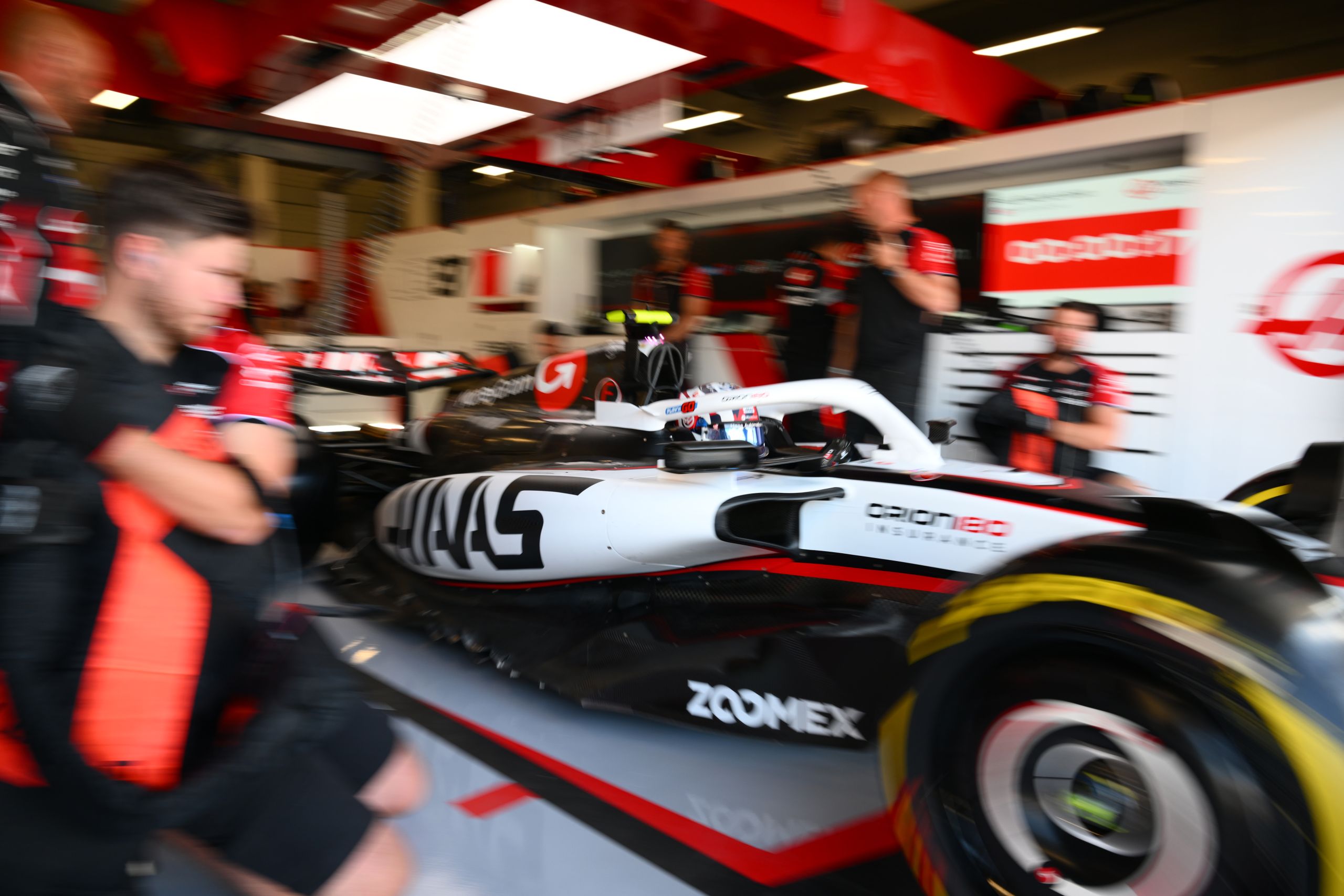How Does HANS Device Work?


Introduced to Formula One racing in 2003, the Head and Neck Support (HANS Device) system consists of a carbon fibre shoulder collar which is secured under the driver’s safety belts and connected to his helmet by two elastic straps. In the event of an accident, HANS is intended to prevent stretching of the vertebrae and to prevent the driver’s head from hitting the steering wheel.
Invented in the mid-1980s by Dr Bob Hubbard, a biomechanical engineering professor at Michigan State University in the USA, the passive HANS system works on a simple principle. In the event of an impact, the helmet straps control the movement of the driver’s head, while the collar absorbs and redistributes the forces generated by the head’s pendulum momentum – forces that would otherwise be absorbed by the driver’s skull and neck muscles, causing injuries ranging from whiplash to neck or skull fractures. The helmet loading is also transferred from the base of the skull to the forehead, which is far better suited to taking the force.
The original HANS device went on sale in 1990, but its large collar was unsuited to single-seater series with narrow, tight cockpits. However, after Mika Hakkinen’s enormous accident in Adelaide in 1995 (in which he fractured his skull) the FIA instituted research to establish the best way of protecting Formula One drivers’ heads in major impacts. Airbag and ‘active’ safety systems were briefly considered, before the focus shifted to the development of a HANS system suitable for F1 racing.
In tests HANS was shown to reduce typical head motion in an accident by 44 per cent, the force applied to the neck by 86 per cent and the acceleration applied to the head by 68 per cent – bringing the figures for even large impacts under the ‘injury threshold.’
How HANS Device Saves Lives (Video)
In this video, Mercedes Technical Director James Allison explains how the HANS Device saves lives.
How Does the HANS Device Work?
The HANS (Head and Neck Support) device is a safety system designed to protect drivers from serious head and neck injuries in the event of a crash. It works by limiting the movement of the driver’s head and neck during an impact, reducing the risk of basilar skull fracture and other types of neck injuries.
Design and Components
The HANS device consists of a raised collar that fits around the driver’s neck and two tethers made of flexible material that attach to anchor points on the driver’s helmet. The collar is typically made of carbon fiber, which is lightweight and strong, and is designed to distribute the forces of an impact across the driver’s shoulders. The tethers are made of a material that is strong enough to resist the forces of an impact but flexible enough to allow the driver to move his or her head and neck during normal driving conditions.
Functionality
During a crash, the HANS device works by keeping the driver’s head and neck in line with the rest of his or her body, reducing the risk of serious head and neck injuries. The tethers attached to the driver’s helmet provide a connection between the driver’s head and the collar, which limits the movement of the head and neck during an impact. The collar itself is designed to distribute the forces of an impact across the driver’s shoulders, reducing the stress on the neck and head.
Impact on Driver Comfort and Movement
While the HANS device is an important safety system, it can also have an impact on driver comfort and movement. The raised collar can restrict the driver’s head movement, making it more difficult to look around the cockpit during a race. Additionally, the tethers can create additional pressure on the driver’s shoulders and neck, which can be uncomfortable during long races. However, most drivers find that the benefits of the HANS device outweigh any discomfort it may cause, and many have credited the device with saving their lives in serious crashes.
Mandatory Use and Impact on Motorsports
Mandate and Adoption
The HANS device has been mandatory in most major motorsports sanctioning bodies since the early 2000s. The mandate was put in place to reduce the likelihood of head or neck injuries, including the often fatal basilar skull fracture, in the event of a crash. The HANS device was initially met with some resistance from drivers who found it uncomfortable and restrictive, but as more drivers began to use it, its benefits became clear. Today, it is widely accepted and used by drivers in all levels of motorsports.
Reduction in Fatalities and Serious Injuries
The HANS device has had a significant impact on driver safety since its introduction. According to a study by Michigan State University’s biomechanical engineering department, the HANS device has reduced the risk of fatal or serious head and neck injuries by 88%. This reduction in injuries has saved countless lives and has made motorsports a safer sport for all involved.
Continued Innovation and Development
The HANS device was a groundbreaking piece of safety equipment when it was first introduced, but it has continued to evolve and improve over the years. Today’s HANS devices are lighter and more comfortable than their predecessors, and they are designed to allow for greater range of motion and easier exit from the car in the event of an emergency. The U-shaped design of the device has also been refined to better fit the contours of the body and provide greater support. In conclusion, the mandatory use of the HANS device in motorsports has had a significant impact on driver safety. It has reduced the risk of fatal or serious head and neck injuries by 88%, making motorsports a safer sport for all involved. The continued innovation and development of the HANS device ensures that it will remain a vital piece of safety equipment for years to come.
Before You Go…
The history of FORMULA 1 safety devices goes all the way back to the inception of the sport, however, early efforts were nowhere near as effective as they are today. Thankfully, due to the ongoing work of F1 and the FIA, we now have fewer serious crashes resulting in Formula 1 deaths than we did in the 50s and 60s.
In this article we look at the history of Formula 1 safety devices through the decades…
How Does HANS Device Work? – FAQs
What is a HANS device?
A HANS (Head and Neck Support) device is a safety equipment used in motorsports to protect drivers from potential head and neck injuries during high-speed impacts. It was invented by Dr. Robert Hubbard and Jim Downing in the early 1980s to reduce the risk of basal skull fractures and other severe injuries during crashes.
How does a HANS device work?
A HANS device works by limiting the movement of a driver’s head and neck during an impact, preventing excessive force on the neck and spine. The device consists of a collar that sits on the driver’s shoulders and connects to the helmet with tethers. In the event of an impact, the HANS device absorbs and redistributes the force, minimizing the risk of injury.
How is a HANS device worn?
A HANS device is worn over the driver’s shoulders and under the safety harness. The collar of the device rests on the shoulders, while the tethers connect to the helmet using anchor points. The driver’s safety harness should be adjusted to ensure the HANS device is securely positioned and comfortably snug.
What types of racing require a HANS device?
Many motorsports organizations, such as NASCAR and IndyCar, have made the use of HANS devices mandatory for drivers in various racing series. This includes categories like Formula 1, sports car racing, rally, and stock car racing, among others. It is always advisable to check the specific safety regulations for each racing series or event.
Is a HANS device required for all drivers in motorsports?
While not all motorsport events and series require a HANS device, many have adopted the use of this safety equipment as part of their regulations. The use of a HANS device is highly recommended in any racing situation due to the significant reduction in the risk of head and neck injuries during high-speed impacts.
What are the different types of HANS devices available?
There are various HANS devices available, catering to different preferences and requirements. Some common types include:
HANS Professional Series – Designed for professional racers, these devices are made from high-strength materials like carbon fiber and offer the best performance and weight reduction.
HANS Sport Series – More budget-friendly options that still provide excellent safety and protection, often made from reinforced plastics or composite materials.
HANS Adjustable – These devices can be adjusted to fit the driver’s preferred seating angle and are suitable for drivers who switch between different types of race cars.
HANS Youth – Specially designed for younger drivers, these devices are smaller and lighter to accommodate the unique requirements of youth racers.
Can I use a HANS device with any helmet?
To use a HANS device, your helmet must have the proper anchor points for attaching the device’s tethers. Most racing helmets manufactured in recent years are HANS-compatible and come with the necessary anchors pre-installed or can be easily fitted with the anchors. It is essential to check your helmet’s compatibility and follow the manufacturer’s guidelines for proper installation and use.
What does the HANS device do?
The HANS device, which stands for Head And Neck Support, is a safety device used in motorsports to reduce the risk of head and neck injuries, particularly during a high-speed crash. It works by restraining the helmet and head relative to the torso, thereby limiting the extreme forward head movement during a frontal impact. This is crucial in preventing serious injuries such as basilar skull fractures and severe neck strain. The HANS device is worn over the driver’s shoulders and is secured by the safety harness of the car, with two tethers connecting the device to the driver’s helmet. It has become a mandatory piece of equipment in most major racing series, including Formula 1, due to its effectiveness in enhancing driver safety (FIA).
Does NASCAR still use the HANS device?
Yes, NASCAR still requires the use of the HANS device (Head And Neck Support device) for drivers. The device became mandatory in all of NASCAR’s national touring series shortly after the death of Dale Earnhardt in 2001, who tragically passed away in a crash at the Daytona 500 where he was not wearing a HANS device. The HANS device is widely recognized for its role in improving driver safety by significantly reducing the likelihood of head and neck injuries during high-impact crashes. NASCAR’s continued use of the HANS device reflects its commitment to driver safety and the effectiveness of the device in preventing serious injuries.





